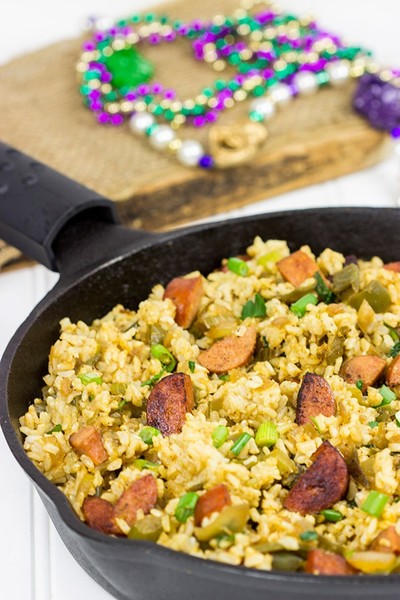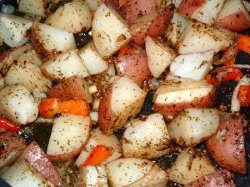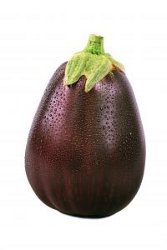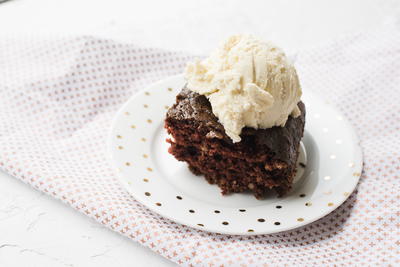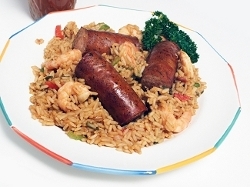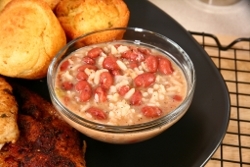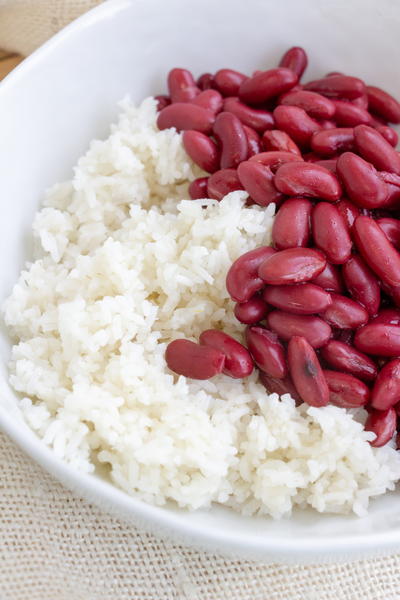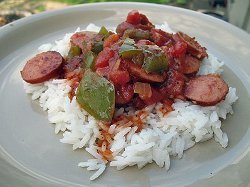Turducken
Ingredients
- Since the Turducken takes about 12 hours to cook, you will need to
- plan your time wisely. The quickest way is to get friends or family
- members to make the dressings (or, if you're on your own, you will
- need to make the three dressings the day before boning the fowl
- and assembling the Turducken).
Instructions
Cover the dressings tightly, and refrigerate them for several hours so they will be well-chilled before you place them in the meat. You can bone the meat (be sure to save the bones for stock) and assemble the Turducken the day before cooking -- and family or friends can have fun helping you with this, too! Keep the Turducken refrigerated until ready to cook. Make the gravy after the Turducken comes out of the oven. To stuff the Turducken itself, you will need about 7 cups of the andouille dressing, about 4 cups of the cornbread dressing, and about 3 cups of the oyster dressing. It's also nice to serve additional dressing from bowls at the table, so you are told in the list of ingredients how many times to multiply each dressing recipe to have plenty extra. If you're inexperienced at boning fowl, start with the turkey; because of it's size, you can more easily see the bone structure. After boning the turkey, the duck and the chicken will go much faster. Remember, each time you do a Turducken it gets easier; it doesn't take magical cooking abilities, it just takes care. Ingredients for assembling the Turducken: 4 recipes Andouille Smoked Sausage Dressing 2 recipes Cornbread Dressing 4 recipes Oyster Dressing 20 to 25 pound turkey 4 to 5 pound domestic duckling 3 to 3-1/2 pound young chicken 7 tablespoons Creole seasoning 5 recipes Sweet Potato Eggplant Gravy Tools needed: One small hammer One 3-inch needle; a "packing" needle with a curved tip works well One 15x11 inch baking pan, at least 2-1/2 inches deep One pan, larger than the 15x11 pan, that the smaller pan will fit inside Make the three dressings, then refrigerate. Boning the fowl. It's helpful to keep the following in mind: Your Thanksgiving guests will each end up with one piece of completely boneless turkey meat, one piece of completely boneless duck meat, and one piece of completely boneless chicken meat. Be careful not to pierce the skin except for the initial slits. Cuts in the skin tend to enlarge during cooking and make the end result less attractive, as well as more dry. Allow yourself plenty of time, especially if you're a beginner. And even if you're experienced, approach the boning procedure with a gentle, careful touch - the meat is not tough and you want to end up with as much of it as possible. Bone one side of each bird -- either the left or the right -- before doing the other side. Use a sharp boning knife and use mainly the tip; stay close to the bone at all times with the knife. It's worth the time and effort! To bone the turkey: Place the turkey, breast down, on a flat surface. Make an incision the entire length of the spine through the skin and flesh. Starting from the neck end and using the tip of the knife, follow as closely to the bone as you can cut, carefully teasing the skin and meat away from the frame. Toward the neck end, cut through the meat to expose the shoulder blade (feel for it first and cut through small amounts of meat at a time if you have trouble locating it); cut the meat away from around the bone and sever the bone at the joint so you can remove the blade. Disjoint the wing between the second and third joint; free the heavy drumstick of the wing and remove it, being careful to leave the skin intact. Continue teasing the meat away from the backbone, heading toward the thighbone and being careful to keep the "oyster" -- the pocket of meat on the back -- attached to the skin instead of leaving it with the bone. Cut through the ball-and-socket joint to release the thigh bone from the carcass; you should now be able to open the bird up more in order to better see what bones are still left to deal with. Continue teasing the meat away from the carcass until you reach the center front of the breast bone. Then very carefully separate the skin from the breast bone at the midline without piercing the skin (go slowly because the skin is very thin at this point). Repeat the same boning procedure on the other side of the turkey, with the turkey still breast down. When both sides are finished, carefully remove the carcass. Save carcass for stock or gumbo. Remove the thigh and leg bone on each side as follows: being careful not to break through the skin, use a small hammer to break the leg bone completely across, about two inches from the tip end. Then manipulate both ends of the bone with your hands to be sure the break is complete. Leave the tip of the bone in, but remove the leg bone and thigh bone as one unit. To do this, cut the meat away form around the thigh bone first, using the knife tip; then, holding the thigh bone up with one hand, use the other hand to carefully cut the meat away from around the leg-thigh joint. (Don't cut through this joint, and don't worry if it seems as if you're leaving a lot of meat around the joint it can't be helped, and besides, it will add flavor to the stock you make with the bones!) Then use the blade of the knife to scrape the meat way from the leg bone; remove the leg-thigh bone. With your hands or the knife, one by one remove as many bin bones from the leg meat as possible. Then, if necessary, pull the tip of the leg bone to turn the meat to the inside, so the skin is on the outside and it looks like a regular turkey again. Refrigerate. To bone the duck: Place the duck, breast down, on a flat surface and follow the same procedures you did to bone the turkey, except this time you will remove all of the bones, instead of leaving in part of the wing and leg bones. To bone each wing, cut off the first two joints of the wing, leaving the wing's drumstick. Cut the meat from around the drumstick and remove this bone. When you reach the thigh, follow the thigh-leg bone with the knife blade to release the bone as one unit; again, be careful not to cut the skin. Trim some of the excess skin and fat from around the neck area. Cut the skin in small pieces and reserve it for making the gravy. Discard the fat. Refrigerate the duck and skin pieces. To bone the chicken: Use precisely the same procedure to bone the chicken as you used to bone the duck. To assemble the Turducken: Spread the turkey, skin down, on a flat surface, exposing as much meat as possible. Sprinkle the meat generously and evenly with a total of about 3 tablespoons of the Creole seasoning, patting the seasoning in with your hands. (Be sure to turn the leg, thigh and wing meat to the outside so you can season it too.) Stuff some of the cold andouille dressing into the leg, thigh and wing cavities until full but not tightly packed. (If too tightly packed, it may cause the leg and wing to burst open during cooking). Spread an even layer of the dressing over the remaining exposed meat, about 1/2 to 3/4 inches thick. You should use a total of about 7 cups dressing. Place the duck, skin down, on top of the andouille dressing, arranging the duck evenly over the dressing. Season the exposed duck meat generously and evenly with Creole seasoning, using about 1 tablespoon, and pressing it in with your hands. Then spread the cold cornbread dressing evenly over the exposed duck meat, making the layer slightly less thick than the andouille dressing, about 1/2 inch thick. Repeat with the chicken and the oyster dressing. Enlist another person's help to carefully lift the open Turducken into an ungreased 15x11 baking pan that is at least 2-1/2 inches deep. (NOTE: this pan size is ideal because the Turducken fits snugly in the pan and stays in the proper shape while cooking). As you life the Turducken into the pan, fold the sides of the turkey together to close the bird. Have your helper hold the turkey closed while you sew up all the openings, making the stitches about 1 inch apart. When you finish sewing up the Turducken on the first side, turn it over in the pan to sew closed any openings in the other side. Then tie the legs together, just above the tip bones. Leave the turducken to cook, breast side up, in the pan, tucking in the turkey wings. Place the Turducken pan in a slightly larger pan with sides at least 2-1/2" deep, so that the larger pan will catch the overflow of drippings during cooking. Season the exposed side of the Turducken with about 2 tablespoons of Creole seasoning, patting it in with your hands. Refrigerate until ready to bake. Bake the Turducken at 190F, about 12 hours, until done, or until a meat thermometer inserted through to the center reads 165F. (NOTE -- there's no need to baste, but you will need to remove accumulated drippings from the Turducken pan every couple of hours so that the lower portion of the turkey doesn't deep fry in the hot oil. When done, remove the Turducken from the oven and let rest and cool for 1 hour. Meanwhile, make the gravy with some of the pan drippings and the reserve duck skin. With strong spatulas inserted underneath (remember there are no bones to support the birds' structure), carefully transfer the Turducken to a serving platter and present it to your guests before carving. Be sure to make your slices crosswise so that each slice contains all three dressings and all three meats. Serve additional bowls of the dressings on the side. SWEET POTATO EGGPLANT GRAVY 1/2 cup drippings from the Turducken, plus the reserved duck skin 4 cups eggplants, peeled and chopped 1 1/2 cups onions, chopped 1 cup sweet potatoes, peeled and finely chopped 1 teaspoon garlic, minced 3 bay leaves 1 1/2 teaspoons salt 1 1/2 teaspoons white pepper 1 1/2 teaspoons cayenne 1 teaspoon dry mustard 1/2 teaspoon dried thyme leaves 8 cups turkey, duck or chicken stock 1 cup dark brown sugar, packed 1 cup sweet potatoes, peeled and cut into 1/2" dice 3 tablespoons Grand Marnier 1/2 cup green onions, finely chopped Place the drippings and duck skin in a large skillet over medium-high heat. Add 3 cups of the eggplant and saut until eggplant starts to get soft, translucent and brown, about 5 minutes, stirring frequently. Add the onions and remaining 1 cup eggplant. cook until the onions start to brown, about 8-10 minutes, stirring occasionally. Add the finely chopped sweet potatoes. Continue cooking and stirring for 4 minutes. Stir in the garlic and cook 3 minutes, stirring occasionally. Add the bay leaves, 1 teaspoon of the salt, 1 teaspoon each of the white and red peppers, the mustard and thyme. Stir well, scraping the pan bottom as needed. Stir in 1 cup of the stock into the vegetables and cook 2 minutes, then add 1 more cup of stock. Cook 5 minutes, stirring occasionally. Stir in 1/4 cup of the sugar and cook 2 minutes, stirring occasionally. Add another 1 cup of stock and cook 10 minutes, stirring occasionally. Add the remaining 1/4 cup sugar and 1 cup more stock. Cook 10 minutes, then add another 1 cup of stock and cook 10 minutes more, stirring occasionally. Reduce heat to low and simmer 13 minutes. Stir in another 1 cup stock and simmer for 3 minutes. Remove from heat and strain well, forcing as much liquid as possible through the strainer. Place the strained gravy in a 2 quart saucepan. Add the diced sweet potatoes and 1 cup stock. Bring to a boil over high heat, then reduce heat and simmer 3 minutes, skimming any froth from the surface. Stir in the Grand Marnier and continue simmering for 7 minutes, stirring occasionally. Add the green onions, the remaining 1/2 teaspoon each of salt, white and red pepper, and the FINAL cup of stock. Bring gravy to a boil and simmer until it reduces to about 3 cups, about 8 minutes, stirring occasionally. Yield: About 3 cups. ANDOUILLE SMOKED SAUSAGE DRESSING 4 tablespoons oil 4 cups chopped onions 2 cups chopped celery 2 cups chopped green bell peppers 1-1/4 pounds andouille 4 tablespoons butter 2 tablespoons sweet paprika 2 tablespoons garlic, minced 1 tablespoon Tabasco sauce 2 cups turkey, duck or chicken stock 1-1/2 cups very fine dry French bread crumbs Place the oil in a large skillet over high heat. Add 2 cups of the onions, 1 cup each of the celery and bell pepper. Saute until the onions are dark brown but not burned, about 10-12 minutes, stirring occasionally. Add the andouille and cook until the meat is browned, about 5 minutes, stirring frequently. Add the remaining 2 cups onions, 1 cup celery and bell pepper, the butter, paprika, garlic and Tabasco, stirring well. Reduce heat to medium and cook about 3 minutes, stirring occasionally. Stir in the stock and bring to a simmer; continue cooking until the oil rises to the top (until the water evaporates), about 10 minutes. Stir in the bread crumbs. Remove from heat. Transfer mixture to an ungreased 8x8" baking dish; bake uncovered in a 425F oven until browned on top, about 45 minutes, stirring and scraping pan bottom well every 15 minutes. CORNBREAD DRESSING 4 tablespoons ground turmeric 2 teaspoons salt 1-1/2 teaspoons white pepper 1 teaspoon cayenne 1 teaspoon black pepper 1 teaspoon dried oregano leaves 1/2 teaspoon onion powder 1/2 teaspoon dried thyme leaves 4 ounces (1 stick) butter 4 tablespoons margarine 3/4 cup onions, finely chopped 3/4 cup green bell peppers, finely chopped 1/2 cup celery, finely chopped 1 tablespoon garlic, minced 2 bay leaves 3/4 pound turkey, duck or chicken giblets, boiled until tender then ground 1 cup turkey, duck or chicken stock 1 tablespoon Tabasco sauce 5 cups finely crumbled cornbread 1-2/3 cups evaporated milk 3 eggs Thoroughly combine the seasoning mix ingredients in a small bowl and set aside. In a large skillet, melt the butter and margarine with the onions, bell peppers, celery, garlic and bay leaves over high heat. Saute about 2 minutes, stirring occasionally. Add the seasoning mix and continue cooking until vegetables are barely wilted, about 5 minutes. Stir in the giblets, stock and Tabasco. Cook for 5 minutes, stirring frequently. Remove from heat. Add the cornbread, milk and eggs, stirring well. Spoon dressing into a greased 9x13" baking pan. Bake at 350F until browned on top, about 35-40 minutes. OYSTER DRESSING 1/2 teaspoon salt 1/2 teaspoon garlic powder 1/2 teaspoon cayenne 1/2 teaspoon sweet paprika 1/2 teaspoon black pepper 1/4 teaspoon onion powder 1/4 teaspoon dried oregano leaves 1/4 teaspoon dried thyme leaves 20 small to medium oysters in their liquor, about 1/2 pound 1 cup cold water 6 ounces (1-1/2 sticks) margarine 1 1/2 cups onions, chopped 1 cup celery, chopped 1 cup green bell peppers, chopped 1 teaspoon garlic, minced 1 cup very fine dry French bread crumbs 2 tablespoon unsalted butter, softened 1/2 cup green onions, chopped 1/2 cup parsley, finely minced Combine the oysters and water; stir and refrigerate at least 1 hour. Strain and reserve oysters and oyster water, refrigerate until ready to use. Melt 4 tablespoons of the margarine in a large skillet over high heat. When margarine is almost melted, add 3/4 cup of the onions, 1/2 cup each of the celery and bell peppers. Saute over high heat until onions are dark brown but not burned, about 8 minutes, stirring frequently. In a small bowl, combine the seasoning ingredients and mix well. When onions are browned, stir 2 teaspoons of the seasoning mix and the garlic into the skillet. Reduce heat to medium and continue cooking for 5 minutes, stirring occasionally. Add the remaining 3/4 cup onions, 1/2 cup celery, 1/2 cup bell peppers and 1 stick margarine, and 1/4 cup of the green onions, 1/4 cup of the parsley, and the bay leaves. Stir unti margarine is melted. Continue cooking about 10 minutes, stirring occasionally. Stir in the remaining seasoning mix and enough bread crumbs to make a moist but not runny dressing. Remove from heat. Stir in the drained oysters. Spoon dressing into an ungreased baking pan and bake at 350F for 30 minutes. Remove from oven, discard bay leaves and stir in the butter and the remaining 1/4 cup each green onions and parsley.
Read Next1 2 3 Jambalaya

